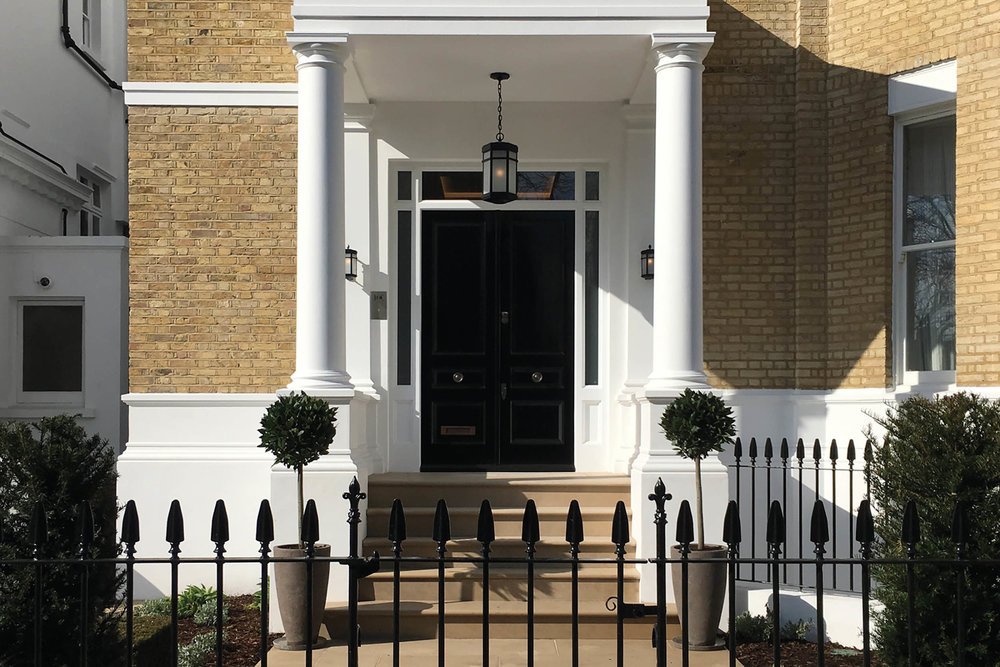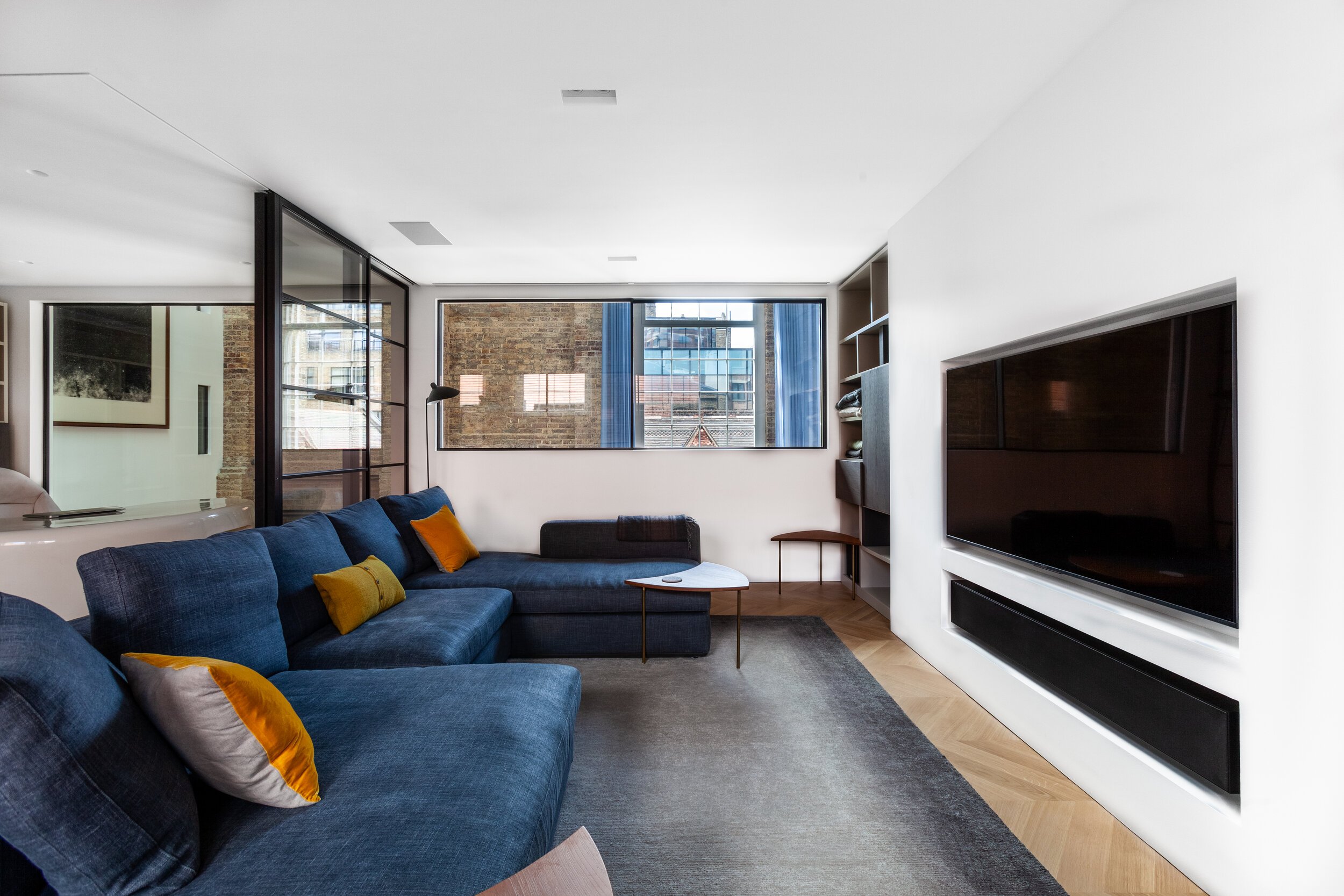Trends in luxury property in a post-Covid world
As we continue to adjust to the reality that the world we live in is not going to return to its pre-Covid state for many more months, if not years, there will be an inevitable shift in focus and a realignment of priorities among the owners and occupants of prime and super-prime properties. As specialist Architects in the Prime Central London (PCL) market, Lees Associates are uniquely placed to offer an insight into the trends that we are already starting to see, many of which will no doubt filter down into the mainstream. In our latest market commentary, Lees Associates’ Partner, Andrew Paulson, shares some of our experiences and predictions…
Lifestyle
As soon as lockdown was imposed in March 2020 it had a sudden and dramatic effect on how we all live our daily lives. The fundamental and accepted rituals of daily life have been thrown upside-down and we have all been forced to re-assess our priorities. So what long-term impact do we see this having on luxury homes?
Well, to start with, the need for one’s own front door has never been more important. Apartment blocks, no matter how exclusive, with their shared entrances, lifts and other facilities, will drop in popularity, and private houses will become ever more desirable. Luxury developments with shared amenities such as swimming pools, spas, gyms and cinemas will also be overlooked by HNWIs as they seek their own private retreats.
Properties with, or with potential for, private amenities will command an even higher premium than they have historically. And these amenities will be seen much more as essentials to daily life than as nice-to-haves or somewhere to entertain friends. And the popularity of products such as Peloton, allowing personal work-outs with a trainer and others but without any physical proximity, will grow; Lees Associates are currently installing a large new Peloton showroom into a top London department store, which is a sure sign of this trend continuing!
Properties with private amenities will command an even higher premium than they have historically
Meanwhile, the demand for open-plan living, or at least inflexible open-plan living, is already dropping. Homes with families all sharing living and working spaces will inevitably require more separate private spaces for different activities to concurrently take place in.
There is also now a greater emphasis on holistic and spiritual wellness, with it being much more common to have spaces set aside for meditation or prayer. Now, more than ever, we are recognising the value of having a private place for inner reflection in our homes. But at the same time we are seeing an increase in requests for playful elements to be added to homes, things that – to borrow a phrase from Marie Kondo – “spark joy”. For example, helter-skelter slides from children’s bedrooms to their playrooms, and outdoor cinemas.
Home offices
Understandably, a private home office at which one can comfortably work all day has leapt up everyone’s order of priorities; it is no longer an after-thought or a nice-to-have. It is now recognised as a vital space in which to spend significant parts of the day. As such, the list of requirements has grown to include:
More space, well-designed, with beautifully crafted ergonomic furniture
Proximity to an, ideally private, mini-kitchen and lavatory
Natural light – a window with a view, preferably of greenery and sky
Access to an outside space, ideally a garden with trees
Space for artwork and other personal expression
An impressive back-drop for all of those video calls!
Reliable and secure super-fast internet – satellite internet is becoming mainstream
Sound proofing, both to adjacent rooms and externally.
In response to this, offices will make more of an effort to win people back. For a number of years now we have seen top-end private offices being fitted-out like homes; we expect to see this continue apace.
A home office recently completed by Lees Associates
Hygiene
The quality of the air that we breathe has never come under sharper focus and, as a result, a requirement for reliable air and water filtration and purification will rapidly become standard. Home automation systems will not only control the temperature of air throughout the house but also its quality. All fresh air from outside will be filtered.
As we have all become acutely aware of the number of common surfaces that we touch on a daily basis, touchless technology will become more commonplace. We are all used to face-recognition and controlling devices with our voices and this will increasingly become the norm. It might sound creepy, and there are obvious security concerns, but maybe Alexa really is our new best friend?!
While automatic opening doors are still unlikely to be seen in private homes, perhaps we will see an increase in the specification of brass and bronze door furniture. It is no coincidence that handles and knobs were traditionally made of either brass or bronze, both copper alloys. It has long been known that the surface of copper has antimicrobial properties, with the ability to kill a wide range of harmful microbes, often within two hours, and with a high degree of efficiency. So next time we’re presenting ironmongery finish options to a client, it won’t just be aesthetics that we’re considering!
And soon we will all be wanting a self-sterilising wardrobe, with Samsung earlier this year launching its AirDresser wardrobe, which kills 99.9% of all viruses via powerful jets of air and steam.
Materials and technology
We are definitely seeing a more earnest focus on the sustainability of materials specified in luxury homes. As the world, and especially its more affluent and influential inhabitants, wake up to the realities of the climate crisis, there is an increased emphasis on local materials, recycled materials and minimising embedded carbon, a trend that should be applauded and which we hope will grow exponentially. We have also seen a rise in popularity of warm, earthy colours and tones.
And we are expecting an increased demand for self-sufficiency; not of the Good Life variety, although outside of central London that is growing too, but in terms of water and power. It is now not uncommon for properties to sink their own borehole down to local groundwater sources, installing filtration plant to provide them with their own private, sustainable, clean supply. Similarly, as well as renewable energy sources such as solar, wind and ground-source, some properties are having private generators installed to ensure they have immediate, reliable access to a dedicated power source in the event that the national grid has a supply problem.
The market
I can’t end without briefly commenting on the state of the property market itself. Perhaps against expectations, the PCL is currently being bolstered by pent-up demand, not just following the hiatus of lockdown but going back to 2016 when the uncertainty surrounding the fall-out of Brexit began, and even further to 2014 when the new 12% band SDLT was introduced. Prime buyers who sat on their hands between 2014 and December 2019 are now returning to the market with vigour.
And, contrary to many reports and assumptions, the attractions of PCL to UHNWIs, such as security, stunning architecture, world-class education, shopping and many other amenities, still generally outweigh a move to the country or suburbia. In fact it wouldn’t be a surprise if London were to become more attractive now its commuter population has been decimated. So, despite everything, the long-term PCL market view remains positive. The majority of buyers are purchasing a home to live in for ten-plus years; likewise investors are looking for at least five years, a period over which it seems to be generally accepted that the prime market will continue to see at least 15% growth.
However, we do expect the 2% SDLT surcharge on non-UK-resident buyers, which is due to come in from 1st April 2021, to have an impact on the market. Similarly, the outcome of Brexit negotiations and the uncertainty of further Covid measures being imposed from on high. So it seems likely the current activity in PCL will not be sustained into the new year but, once there is more certainty on Brexit and Covid, confidence should soon return to the market and transactions will likely pick up again later in 2021, when no doubt good quality family houses with all of the attributes described above will command quite a premium.
Closing thought…
It is certain that the effects and repercussions of Covid will be felt for many years, and we are only just starting to adapt to the changes that will need to be made to our lifestyles. But what is remarkable is just how easily we have been able to adapt to these new circumstances. Very little of the technology that has been adopted is new to the market. What we are participating in is not a revolution, simply an accelerated evolution as we adjust to the new normal. And it is the luxury property sector that is leading the way.
To discuss this subject, or any property opportunity, further please give me a call on 020 74031000 or email me at andrewpaulson@la.london





